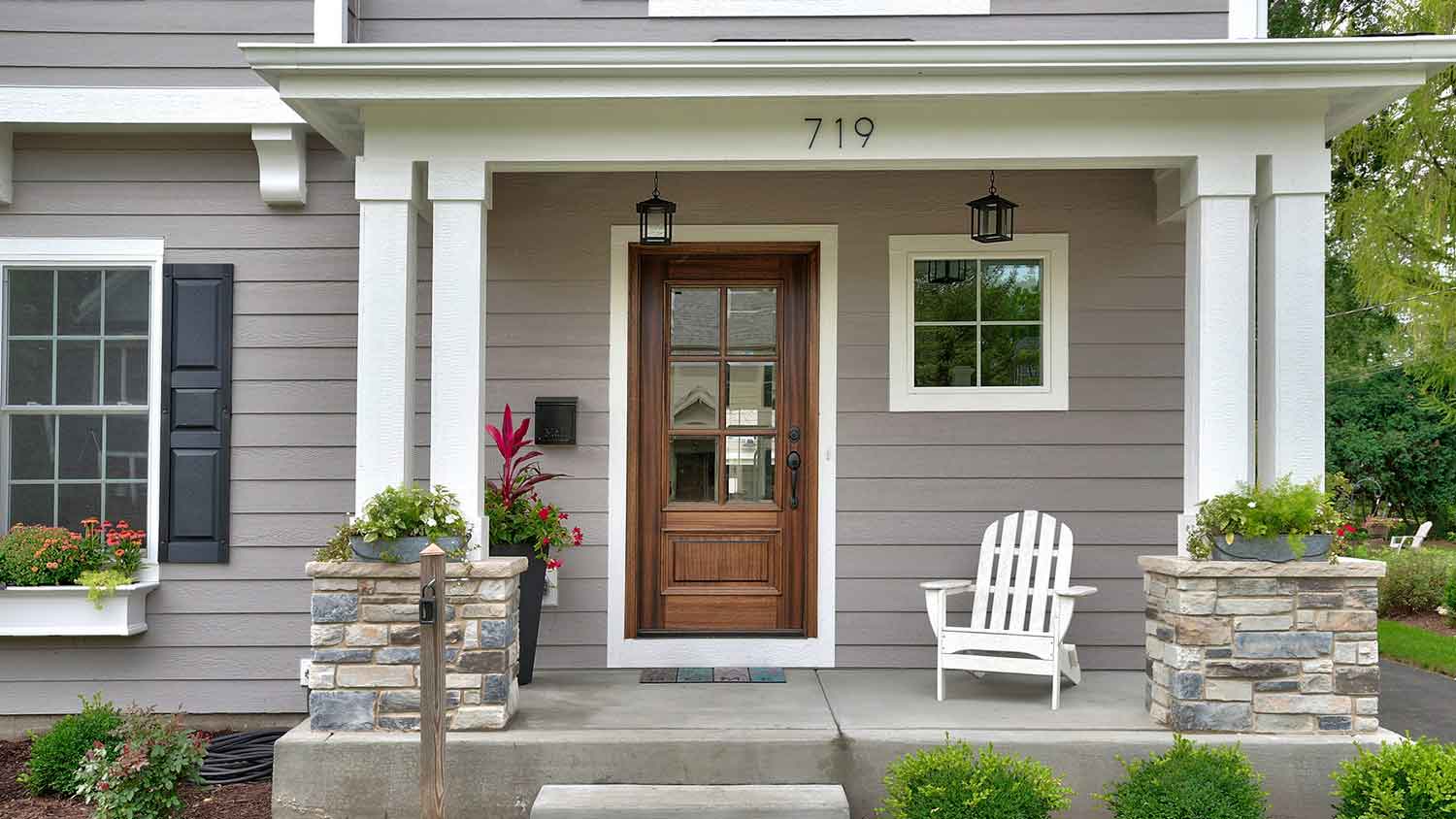
Screen door installation costs depend on size, type of frame material, and the number of doors. Here’s everything you need to know.
If you think it’s made of brick, prepare to be surprised


Brickmould is another name for the trim or casing on an exterior door.
It’s not just a decorative element—it also seals the gap between the door frame and the wall.
Chances are, you already have brickmould around your home without knowing it.
Whether you know it or not, you probably walk by brickmould multiple times a day. Brickmould is the trim around your exterior door that covers the gap between the door frame and the exterior wall. In addition to adding extra flair to your door, it helps seal gaps. Here’s everything you need to know about this exterior door feature.
Brickmould is another word for the trim or casing surrounding a door or window. It serves as a transition between the entryway or opening and the home’s exterior siding material. Modern brickmould isn’t made of brick, but it’s named for a time when many home exteriors were brick, and the trim was used to cover the gap between the frame and the brick exterior.
Brickmould can:
Be preinstalled or a custom design
Seal the gap between the door frame and the exterior wall
Enhance the exterior design
Consist of wood, PVC, or composite materials
If you’d like to replace or add brickmould, a door repair pro can suggest materials and finish the installation.

As part of a door, brickmould surrounds most exterior doors and creates a finished look. It can be preinstalled on the door frame or custom-installed for a unique look. When preinstalled, it can make door installation easier because it prevents the door frame from sitting back too far and makes it easier to align and secure it to the adjacent studs.
Installing brickmould helps seal the door frame and prevent moisture and insects from getting between the frame and exterior wall. The style of brickmould you choose, whether simple or intricate, can also complement the aesthetics of the entryway.
The maintenance required for brickmould depends on the material it’s made out of. In its original form, brickmould was made out of wood, like pine or oak, or brick. Modern materials, such as PVC and composite, are used today for greater durability and resistance to insects.
If you choose wood brickmould, you’ll need to paint or stain it if it isn’t finished to protect it from the elements and insects. As the finish wears off, you’ll have to reapply it every few years. PVC or composite brickmould requires little maintenance as both materials resist weather, rot, and insects. Maintenance involves keeping it clean and wiping off accumulated dust or dirt.
Brickmould can also become loose over time, and a piece or all of it may need replacing. You can contact a door repair professional near you for recommendations and potentially have them complete repairs.
For door repair projects, homeowners most commonly ask us to replace rotted wood on the outside of doors, window sashes, and sills.
You’ll likely need brickmould, but the good news is you probably already have it on existing exterior doors. Take a peek at your front door to check.
Brickmould protects the gap between the door frame and exterior wall from moisture and insects and doubles as a decorative element. If you want to create more character in your entry, you can choose custom molding, learn how to build a door jamb, or hang a custom door.
From average costs to expert advice, get all the answers you need to get your job done.

Screen door installation costs depend on size, type of frame material, and the number of doors. Here’s everything you need to know.

There’s nothing better than a dog door to give your pet free access to the outdoors. Use this dog door installation cost guide to see what it will cost you.

Discover fire door cost data, including installation, materials, and tips to save. Learn what impacts fire door pricing and how to budget for your project.

Wood rot in an exterior doorframe minimizes your home's energy efficiency and leads to costly repairs. Here are some simple DIY fixes to reduce the rot.

Learn how to identify and prevent water from leaking through your sliding glass door with a few easy, effective solutions.

Weather stripping can boost your home’s efficiency and make your living space more comfortable. Learn about the types of door weather stripping in this guide.